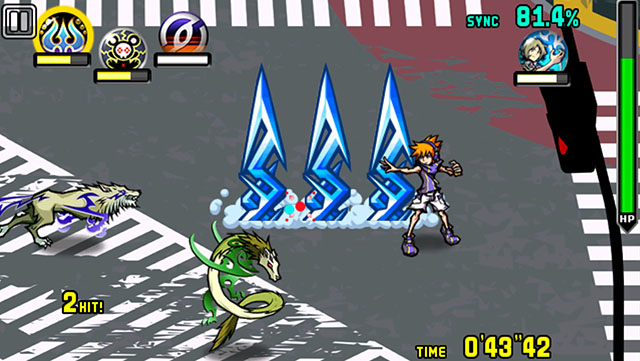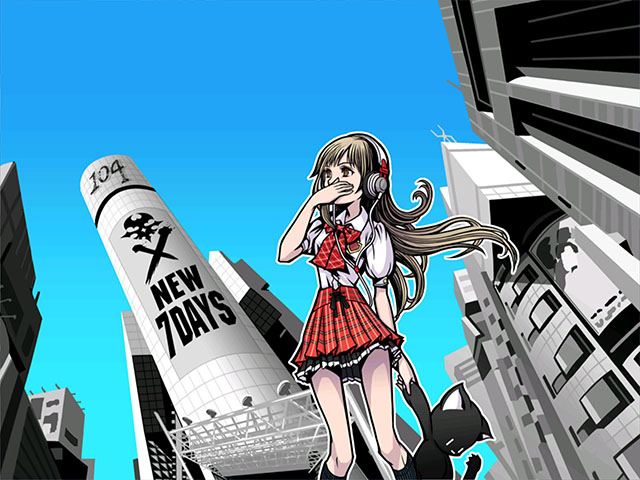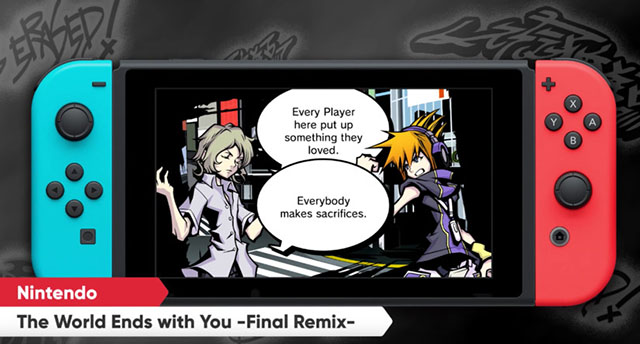A few days ago, a new Nintendo Direct announced that The World Ends with You: Final Remix, a revamp of a 10 year-old RPG, will launch for the Switch later this year. For many viewers, it was a short blip about a half-remembered game, drowned out by other more-hyped titles. But for a small portion of the internet, it was as if Valve had just given Half-Life 3 a release date.
Though only a remake, a TWEWY sequel has been teased so many times since its original release for the DS in 2008 (2007 in Japan) that many fans are overjoyed to have any sort of additional content. Final Remix will contain an expansion “that gets right to the heart of the story,” as well as at least one new character that has only been hinted at in the title’s mobile ports.
The game follows Neku, an anti-social teenage boy who drowns out his surroundings with music after he loses his memories and is pulled into a twisted game to save his soul. He and the other players he meets exist in a limbo between the living and dead, invisible in all but certain parts of the city — a fantasy version of the real-world Shibuya. As he faces off against gamemasters and enemy “noise” that haunts the living inhabitants’ thoughts, he discovers his newfound friends all paid a terrible price to enter the game, and vows to defeat the larger forces pulling the strings.
Critics lauded TWEWY’s aesthetic, which draws heavily from Japanese youth culture, as well as its intriguing plot and catchy soundtrack. Though opinions about its intricate battle system were divided, with some finding its difficulty only exacerbated by a steep learning curve, many agreed it was wholly unique and innovative. The game won a virtual laundry list of awards from IGN, from Best DS Game to Best New IP, and Nintendo Power later named it one of the best games of the 2000s.
What set it apart from other RPGs?
While Square Enix co-developed TWEWY, the game’s stylistic direction is largely attributed to Jupiter, the team behind Pokemon Pinball and Ghost Trick: Phantom Detective. Square Enix was reportedly impressed by the battle mechanics they developed for Kingdom Hearts: Chain of Memories and tasked the same team with creating an IP utilizing the DS’ new dual-screen mechanics, even though the technology itself was still behind closed doors.
The team had one guiding principle while creating TWEWY: to turn the RPG paradigm on its head. They wanted to set their IP apart from Square Enix’s other juggernaut series like Kingdom Hearts and Final Fantasy. “We looked at the project from many angles,” said director Tatsuya Kando in an interview, “always basing our ideas on the premise of portraying traditional RPG elements in a modern light.”
Gone were random encounters and traditional methods of leveling up. Instead of fighting with traditional weapons, Neku attacks using abilities called Psychs, the types of which are determined by the pins in his arsenal These pins can be obtained from enemy noise, purchased in shops, or unlocked by putting the game in Mingle Mode (the mobile ports use Bluetooth) and passing other real-world players.
Combat takes places across both of the DS’ screens. The top screen houses Neku’s current partner, controlled via the D-pad and trigger buttons, while the player commands Neku through touch controls on the bottom screen. The mobile ports later overlaid these two interfaces, simplifying combat greatly. For the Switch release, players can choose between the original touch controls or using the Joy-Con controllers.

Instead of equipment, TWEWY’s armor takes the form of modern Japanese street fashion. And even in a fictional Shibuya, fashion is always changing. Different districts favor different styles, and staying on trend with the coolest designers leads to positive effects in battle, while wearing something that’s “so yesterday” can produce negative effects. Occasionally, repeatedly fighting in a particular brand of clothing in a certain area influences the opinion of the living until it becomes on trend.
Developers worried that tying the game so heavily to Shibuya would alienate foreign audiences, but decided the district’s singular aesthetic added to the game’s mix of fantasy and real-world elements. Several in-game stores correspond to real Shibuya locations, such as 104 (109) and Tow Records (Tower Records). The team also made several trips to the city for on-site research, and incorporated graffiti they saw into both the game’s backgrounds and pin designs.
The fan response

At this point, you might be wondering how so many people managed to miss out on TWEWY the first time. It received enough hype pre-release for the first shipment to completely sell out, leading to delays for several stores in the West. It didn’t help matters that even despite its commercial success, selling nearly 300,000 copies in its first year, Jupiter had never planned for a sequel.
“The game’s concept has not seen any drastic changes since its inception, but it was the first time our team decided to develop for the Nintendo DS hardware, so figuring out how to bring out the best in this hardware was a constant process of trial and error,” explained Kando. They’d had their hands full trying to realize the ideas they did have, let alone a new game.
Still, requests poured in. Especially from Western audiences, where the game’s difficulty and tutorials had been further smoothed out upon release. As recently as 2016, the game’s producer and artist Tetsuya Nomura was asked about any potential plans for the IP.
TWEWY uses its fantasy setting to explore both metaphysical and everyday struggles, and forces its main cast to confront their shortcomings to progress. For example, players get a front row seat as Neku develops from an introverted cynic, hardly convinced that there’s a reality outside of his perception of it, into someone who would risk his life for his friends. It’s a story that resonated with many, as shown by the game’s fervent fanbase. For its 10th anniversary, fans gathered on Reddit to share their favorite moments and muse over TWEWY’s future.
Its intricate battle system continues to capture players’ imaginations as well. With over 300 pins to discover, fans continue to compare decks for certain situations and the advantages and disadvantages of certain combinations. Adding to this discourse are the pin’s diverse methods of leveling up, either through completing certain tasks, grinding experience, or, in some cases, turning off the game. The ability to unlock new pins by passing other real-world players, coupled with a mini-game that lets you fire off your pins at one another Beyblade-style, transforms the system into a card game of sorts. One that continues to inspire discussion 10 years later.







Published: Jan 13, 2018 09:54 am